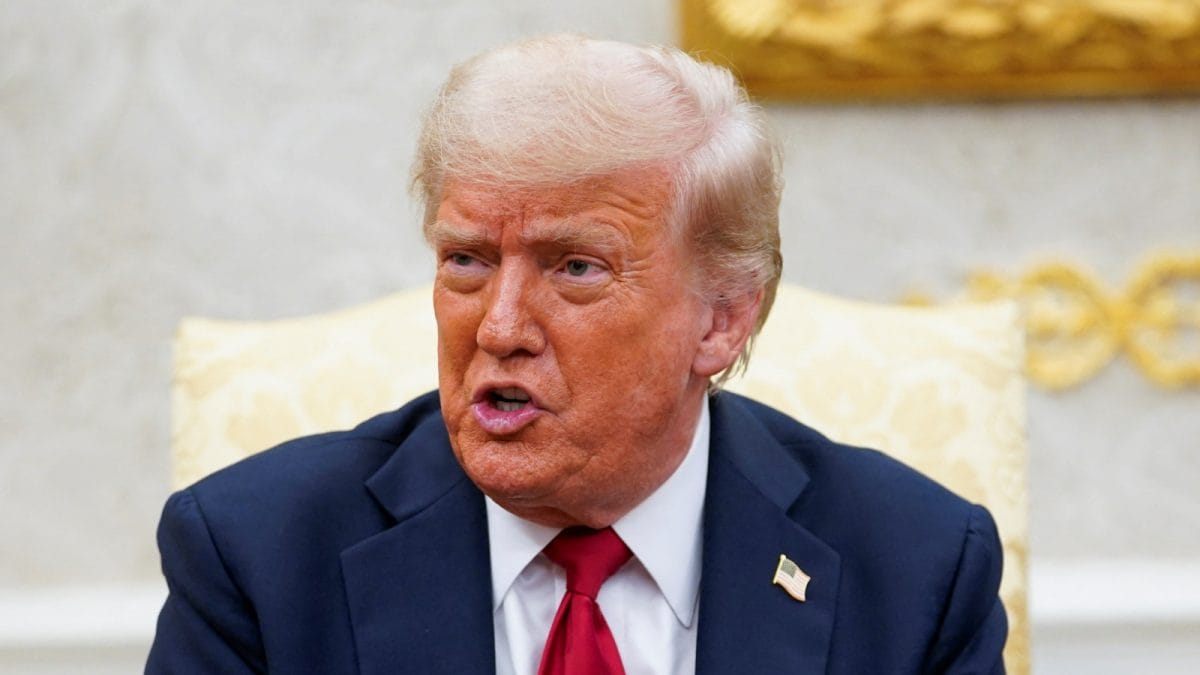ARTICLE AD BOX
Last Updated:August 05, 2025, 11:10 IST
Pakistan’s reported plans to acquire China’s J-35A stealth jets have added pressure on India’s fifth-gen fighter jet timeline, bringing renewed focus to regional air power dynamics

According to defence experts, priority should be given to AMCA, acquiring technology from private companies and Western countries. (PTI/File)
India’s pursuit of fifth-generation fighter jets is once again in the spotlight, as the race for aerial superiority in the region intensifies. With the indigenous Advanced Medium Combat Aircraft (AMCA) expected to take to the skies by 2035, the spotlight is now on how India plans to bridge the capability gap in the interim.
While reports suggest that India has opted against acquiring the US-made F-35 Lightning II and remains cautious about Russia’s Su-57, neighbouring countries are rapidly modernising their air forces.
Pakistan’s reported plans to acquire China’s J-35A stealth jets have introduced a new layer to the regional security landscape, prompting renewed focus on the timeline of India’s fifth-generation fighter jet programme and adding urgency to discussions around future capabilities and preparedness in the evolving regional balance.
India’s aspiration to modernise its military and strengthen its air power has reached a pivotal moment. Meanwhile, Donald Trump has been advocating for the sale of the F-35 fighter jet, even as doubts continue to surround Russia’s Su-57.
How Crucial Are Fifth-Gen Jets For India?
The Indian Air Force (IAF) currently operates only 29 squadrons, a number reduced by the retirement of old MiG-21 aircraft and delayed purchases of new jets. The AMCA programme, developed by the Defence Research and Development Organisation (DRDO) and the Aeronautical Development Agency (ADA), is expected to be ready by 2035.
This twin-engine stealth jet will feature an AI-based electronic pilot, supercruise, and an internal weapons bay, but its prototype is likely to be ready only by 2027-28, with full production taking even longer. Meanwhile, neighbouring countries are enhancing their air power. China possesses J-20 stealth jets and is testing sixth-generation prototypes like J-36 and J-50.
Pakistan plans to acquire 40 J-35A stealth jets by 2026-27, posing a serious challenge for India, particularly in light of recent tensions such as the Pahalgam attack and Operation Sindoor.
Why Is India Not Opting For The F-35?
Earlier this year, US President Donald Trump offered India the F-35A Lightning II fighter aircraft, touted as the ‘world’s most high-tech stealth jet’, aiming to strengthen India-US defence relations. However, India expressed little interest in this proposal.
According to Bloomberg, India has indicated its reluctance to purchase the F-35, citing several strategic and political reasons.
The cost of an F-35 fighter aircraft is $80 million (over Rs 700 crore), and its maintenance and spare parts are also expensive. The US retains full control over the jet’s software and stealth coatings, potentially compromising India’s strategic autonomy.
Additionally, a substantial portion of India’s defence purchases come from Russia. The US had previously excluded Turkey from the F-35 programme due to its use of the Russian S-400 defence system, raising fears in India that buying F-35s could impact its strategic relations with Russia.
Why Is India Wary Of The Su-57E?
Russia, on the other hand, has offered the Su-57E, including technology transfer and local production at Hindustan Aeronautics Limited (HAL). This offer is appealing to India, given the existing infrastructure of the Su-30MKI. However, there are concerns about the Su-57’s stealth capabilities, and India exited its co-development programme (FGFA) in 2018 due to unmet expectations. Moreover, the Russia-Ukraine war and Western sanctions have affected the Su-57’s production.
What Is Pakistan’s Ploy And India’s Strategy?
Pakistan’s intentions to acquire J-35A jets are worrying for India. Pakistan, which imports more than 80% of its weapons from China, is also discussing building KAAN aircraft with Turkey, increasing pressure on India’s northern and western borders. Defence experts assert that India urgently needs fifth-gen jets, as waiting ten years for the AMCA could be risky.
The IAF recently presented to the government, recommending the import of 2-3 squadrons (40-60 jets). A committee led by Defence Secretary RK Singh highlighted the need for fifth-gen jets to bolster readiness on the northern and western borders. However, retired Air Marshal Anil Chopra stated that neither the F-35 nor the Su-57 are entirely suitable for India, advocating instead for focusing on AMCA and involving the private sector.
What Lies Ahead For India
India now faces three options to acquire fifth-gen fighter jets. According to defence experts, priority should be given to AMCA, acquiring technology from private companies and Western countries. Moreover, immediate needs could be met by increasing the purchase and production of aircraft like Rafale and Tejas Mk2.
Experts have also suggested that AMCA should be developed in parallel with limited purchases of F-35 or Su-57.
Pakistan’s J-35A plans and China’s progress in sixth-gen aircraft have challenged India’s defence strategy. While both the F-35 and Su-57 have their advantages and risks, India’s current stance focuses on self-reliance and the AMCA.
Trump’s policies and geopolitical complexities have complicated the acquisition of foreign jets. Experts have suggested that India must rapidly develop the AMCA, involve the private sector, and find an interim solution with 4.5th-gen jets.
view comments- Location :
- First Published:
August 05, 2025, 11:07 IST
News india Neither F-35 Nor Su-57: Why India Is Taking Its Time On 5th-Gen Fighter Jets
Disclaimer: Comments reflect users’ views, not News18’s. Please keep discussions respectful and constructive. Abusive, defamatory, or illegal comments will be removed. News18 may disable any comment at its discretion. By posting, you agree to our Terms of Use and Privacy Policy.
Read More



.png)
.png)
.png)
















 1 hour ago
6
1 hour ago
6









 English (US) ·
English (US) ·